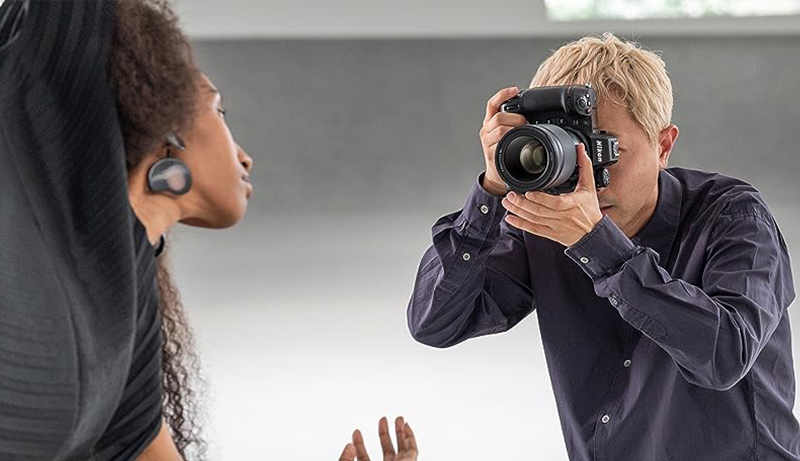As an affiliate, we may earn a commission from qualifying purchases. We get commissions for purchases made through links on this website from Amazon and other third parties.
I constantly test cameras in various fields, and this week, my focus is on outdoor photography. Among the 17 different cameras I tested, I’ve narrowed down my selection to 5 top contenders. Among these, the Sony Alpha 1 stands out as the ultimate all-purpose camera capable of handling any challenge with ease. In the following paragraphs, I will discuss each camera I tested in detail, so be sure to read on for all the valuable insights!
If you’re someone who seeks solace away from the bustling city and craves to be one with nature, then photography can be an incredible outlet. Nature offers boundless photography opportunities, and while smartphones can capture decent shots, they often fall short compared to dedicated cameras like point-and-shoots, DSLRs, or mirrorless interchangeable lens cameras. There are certain aspects of outdoor photography that smartphone cameras simply can’t match.
| Image | Product Name | Editor's Rating | Price |
|---|---|---|---|
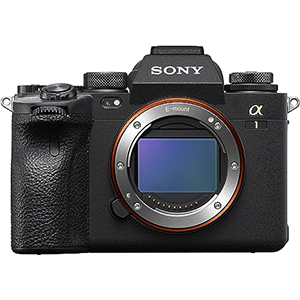 | Sony a1 | Check Price | |
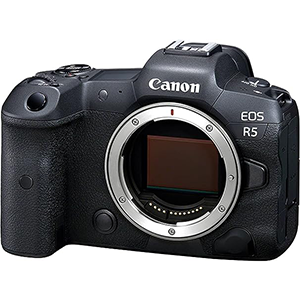 | Canon EOS R5 | Check Price | |
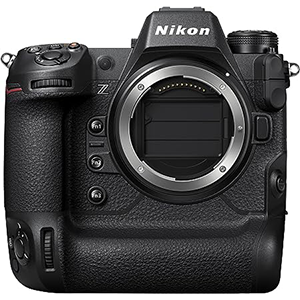 | Nikon Z 9 | Check Price | |
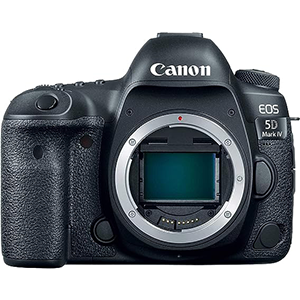 | Canon EOS 5D Mark IV | Check Price | |
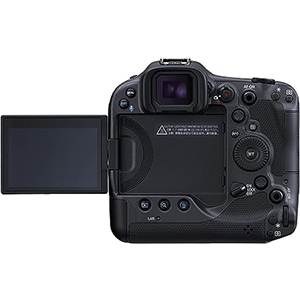 | Canon EOS R3 | Check Price |
Best Outdoor Photography Cameras Reviews
Today, I’ll present you with the finest cameras for outdoor photography, carefully selected based on specific criteria such as performance, durability, value for the price, market research, and buyer feedback. In addition to revealing my top picks, I’ll also provide some valuable tips on how to choose the perfect camera for outdoor photography in the ‘qualities to consider’ section. So, without further ado, let’s embark on this insightful journey.
1. Sony a1
Recently, I made the decision to trade all my Nikon cameras, lenses, and accessories for two Sony Alpha a1 mirrorless cameras. While these Sony cameras may come with a higher price tag, they are undoubtedly the best all-around cameras currently available, and I am not one to compromise on quality!
What sets the Sony Alpha a1 apart from most other cameras is its exceptional combination of features. It boasts a 50MP sensor, allowing for high-resolution images, and an impressive 30fps continuous shooting speed, offering both excellent image quality and high frame rates—a rare find in other cameras.
As a wildlife photographer, autofocus speed and accuracy are crucial to my work. Fortunately, the Sony a1 excels in this aspect, enabling me to capture fast-moving subjects with precision. During my trips to witness the polar bear migration in Canada and the penguins in Antarctica last year, I found myself barely using my DSLR because the Sony a1 proved to be such a remarkable companion.
In every way that matters for my photography needs, the Sony a1 ticks all the boxes. It delivers exceptional image quality, wide dynamic range, swift autofocus, high-speed continuous shooting, and user-friendly operation, making it an ideal choice for landscape photography. Notably, we also hailed the Sony a1 as the best camera for safari photography and bird photography, further cementing its versatility.
Among its standout features are a large sensor that captures an abundance of detail, an impressive 8K/30p Ultra HD video capability, and eye tracking for humans, animals, and birds. Additionally, the camera offers easy customization options and silent shooting for noise-sensitive situations.
It’s essential to acknowledge that the Sony Alpha a1’s excellence does come at a price, and it features a relatively small rear LCD screen. While the eye tracking feature is fantastic, it requires manual selection. Moreover, the highest frame rates are only available for JPEG, HEIF, and lossy compressed RAW files, which could be a limitation for some photographers. Lastly, the camera lacks built-in GPS.
In conclusion, despite a few minor drawbacks, the Sony Alpha a1 has won me over with its unmatched performance and capabilities. It is undoubtedly an investment worth making for any serious photographer seeking the ultimate tool for their craft.
2. Canon EOS R5
In the highly competitive full-frame mirrorless market, Canon finds itself in direct competition with Sony and Nikon, and their flagship product is the EOS R5.
The EOS R5 boasts impressive specs and features, much like the Sony a1, particularly excelling in its excellent Dual Pixel AF (autofocus) system. However, it falls short in certain areas considering its price point. One disappointment is the sensor resolution and frame rate, which do not match the capabilities of some competitors.
Another drawback is the electronic shutter, which can cause exposure “banding,” noticeable as large portions of a single color, especially under artificial lighting conditions. Additionally, when shooting at the maximum frame rate of 20fps, there is a slight loss in dynamic range, which may not be ideal for some demanding photography scenarios.
The video quality of the EOS R5 is superb, especially with its 8K capability. However, there have been reports of overheating issues when using the highest-quality 8K format, which is unfortunate given the pre-launch teasers about this feature.
On the positive side, the EOS R5 features a large 45 MP sensor, providing ample detail in images. It also offers in-body image stabilization, a valuable feature for handheld shooting in various conditions. The body, face, eye, and animal tracking features are commendable, enhancing the camera’s usability in various shooting situations.
Despite its strengths, the EOS R5 has some areas for improvement. It is on the expensive side, making it crucial for potential buyers to carefully consider their requirements and budget. Customization options may not be as user-friendly as desired, and the autofocus setup can be somewhat complicated for some users.
One notable concern is the application of noise reduction to RAW files, which may affect post-processing flexibility for some photographers.
In conclusion, while the Canon EOS R5 boasts impressive features, including outstanding video quality and reliable autofocus, it faces stiff competition in the market. Potential buyers should weigh its strengths and weaknesses against their specific needs and preferences to make an informed decision.
3. Nikon Z 9
The Nikon Z9 was introduced a year later than the Sony a1, which unfortunately meant it wasn’t available when I needed it. Nevertheless, Nikon utilized that time effectively to create an incredibly capable and competitively priced camera with top-notch specifications among all mirrorless full-frame models.
The sensor of the Nikon Z9 is slightly smaller compared to the Sony a1, but it excels in offering a significantly superior frame rate, although this does result in 11MP files. This resolution may be suitable for some specific applications or photographers who prioritize speed over ultra-high resolution.
One of the most impressive features of the Nikon Z9 is its AI-driven autofocus system, which Nikon proudly claims to be “class-leading” and “mind-blowing.” The 493-point AF system ensures excellent subject tracking across the frame, and photographers can choose from 10 AF-area modes for enhanced versatility. Additionally, the camera’s buffer capacity is outstanding, allowing continuous shooting bursts of over 1,000 high-quality images without any worries about buffering.
Video capabilities on the Z9 are highly commendable compared to its mirrorless rivals. With an incredible 8K/60p resolution (made possible with the latest firmware update), it sets new standards for high-quality video capture. Moreover, the camera offers an extended maximum recording time of 2.5 hours, and there are no time limits when shooting in lower-resolution formats.
The Nikon Z9’s ultra-fast image processor, high 120 fps compressed frame rate, and absence of visible rolling shutter artifacts are further testaments to its impressive performance. Additionally, the camera’s battery life is excellent, ensuring extended shooting sessions.
However, it’s essential to be aware of some limitations. The camera’s highest frame rate is achieved at the cost of resolution, providing only 11 MP files. When shooting in RAW format, the frame rate is capped at 20 fps. Moreover, while the autofocus system excels in most situations, it may struggle with erratic movement during tracking.
Comparatively, the in-body image stabilization (IBIS) on the Nikon Z9 may not match up to the performance of the Canon R3. Additionally, the autofocus capabilities for video may not be as advanced as some competing models. Finally, it’s worth noting that the camera’s rear screen does not have a fully articulating design.
In conclusion, the Nikon Z9 is an impressive and competitively priced mirrorless full-frame camera that excels in numerous areas, particularly in autofocus performance and video capabilities. However, potential buyers should carefully consider their specific needs and priorities, as certain limitations exist, such as the trade-off between frame rate and resolution.
4. Canon EOS 5D Mark IV
The Canon 5D Mark IV has carved its place as an excellent and versatile camera that appeals to both enthusiasts and professionals, even though it initially started as an entry-level full-frame DSLR. Although the EOS-1D X Mark III may be Canon’s “flagship” camera, the 5D Mark IV holds its ground firmly in this list.
The camera’s design retains similarities with earlier versions but is now 2.6 oz (75g) lighter, showcasing improved weather-sealing for added durability. While there aren’t many customization options, the essential controls are conveniently placed within reach of your thumb and forefinger, allowing for quick adjustments while keeping your eye on the viewfinder.
Despite having a smaller full-frame sensor compared to the 90D’s APS-C version, the 5D Mark IV compensates through on-chip, analog-to-digital conversion. This results in reduced noise in shadowy areas and impressive detail even at its highest native ISO of 32000, despite the presence of an anti-aliasing filter. However, the camera slightly struggles with dynamic range.
Similar to the 90D, the 5D Mark IV boasts Canon’s remarkable Dual Pixel tracking system, functioning down to -4 EV across 80% of the frame. This enables you to switch focus between individual faces in a crowd scene with ease. However, it lacks efficient eye detection.
The 5D Mark IV’s sensor delivers detailed and vibrant images even at high ISOs, providing exceptional image quality. Its Dual Pixel AF with eye detection further enhances focusing precision, and the touch-to-focus screen adds to its user-friendly appeal. Additionally, the camera offers a robust battery life, allowing for up to 900 shots per charge.
Regarding video performance, the 5D Mark IV offers cinema-quality (DCI) 4K footage. However, it comes with a cropped field of view, which may fill up memory cards quickly. Additionally, its HDMI-out is limited to 1080p, preventing the use of external recorders with better codecs. On a positive note, the Dual Pixel AF and touch-to-focus functionality allow for smooth rack focus, facilitating seamless switching of focus between shots during video recording.
Nonetheless, the camera does have some drawbacks. The subject tracking can be unreliable and imprecise, and it lacks in-body stabilization and Bluetooth connectivity. Moreover, it exhibits a 64x crop factor with 4K video, which may not be ideal for certain videography scenarios.
In conclusion, the Canon 5D Mark IV stands out as a capable and well-rounded camera, offering remarkable image quality, reliable Dual Pixel AF, and user-friendly touch-to-focus features. While its video performance has some limitations, it remains a popular choice among enthusiasts and professionals for its overall versatility and image quality.
5. Canon EOS R3
As a wildlife photographer, I find the top contenders in the full-frame mirrorless camera market, namely the Sony Alpha 1, Nikon Z 9, and Canon EOS R3, to be the most appealing choices.
However, for outdoor photography beyond wildlife, I do have reservations about the Canon EOS R3 due to its relatively smaller sensor. While it does offer exceptional dynamic range, good high-ISO performance, and impressive color rendition, it may not deliver the desired image quality for wedding, portrait, or landscape photographers who often seek higher resolution and larger sensors.
Nevertheless, the EOS R3 does present some intriguing features. Its frame rates are excellent, particularly when using a full battery and a CFexpress card. The camera introduces a unique “Eye Control” feature that enables autofocus point positioning by simply looking at the desired spot in the frame, giving photographers a head-up display-like experience. While this feature can be turned off in favor of a joystick, I appreciate the innovative approach Canon took with it.
Like other Canon bodies on this list, the EOS R3 offers Dual Pixel autofocus and the Deep Learning AF algorithm, ensuring reliable subject recognition. Its high frame rate makes it well-suited for sports and wildlife photography, complemented by a large buffer that proves valuable in those genres.
The camera’s video performance is also impressive, addressing the overheating issues seen in the R5. It offers options like 6K RAW or C-Log 3 format, with a mode called Cinema Raw Light (CRM) that efficiently manages file sizes.
Some standout features of the Canon EOS R3 include its high frame rate of 30 fps, reduced noise with a BSI stacked sensor, and 8 stops of image stabilization, providing added stability for handheld shooting. Additionally, its 6K/60p RAW video capability is a significant advantage for videographers.
However, the EOS R3 does have a few drawbacks to consider. It comes at a relatively higher price point, which may be a factor for some photographers. Furthermore, its resolution may not meet the requirements of certain photography disciplines. Additionally, the camera lacks 8K video capability, and the frame rate is reduced when using an SD card or with a low battery.
In conclusion, the Canon EOS R3 stands as a compelling option for wildlife photographers and those seeking innovative features. Its high frame rates, excellent autofocus, and improved video performance make it a versatile choice. However, photographers with specific needs for higher resolution or 8K video should carefully evaluate their requirements before making a decision.
Final Verdict
It’s widely agreed that the best camera for outdoor photography is likely a full-frame mirrorless camera rather than a DSLR. While mirrorless camera technology is relatively newer, it has quickly become a favored choice due to its compelling features, including a large sensor size, high frame rates, blackout-free shooting, and a lag-free electronic viewfinder (EVF) with full-frame autofocus coverage. This combination is highly appealing, catering to the needs of photographers across different genres.
Admittedly, some of the top-tier full-frame mirrorless bodies, like the Sony a1, can be expensive. However, Canon and Nikon offer more budget-friendly models, making the transition to mirrorless more accessible to a broader range of photographers. If you wish to retain your collection of old lenses, opting for a DSLR is a viable alternative.
In conclusion, full-frame mirrorless cameras offer a compelling package of advanced features and benefits for outdoor photography, making them a popular choice among photographers seeking the best tools to capture stunning images in various outdoor scenarios.
